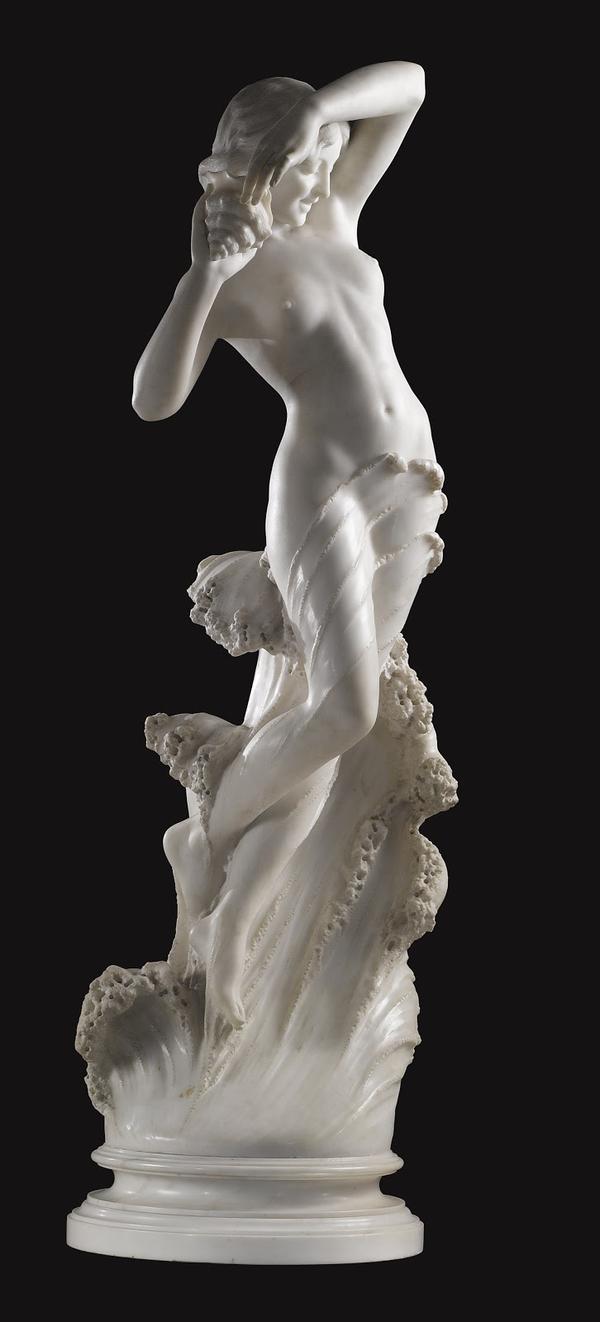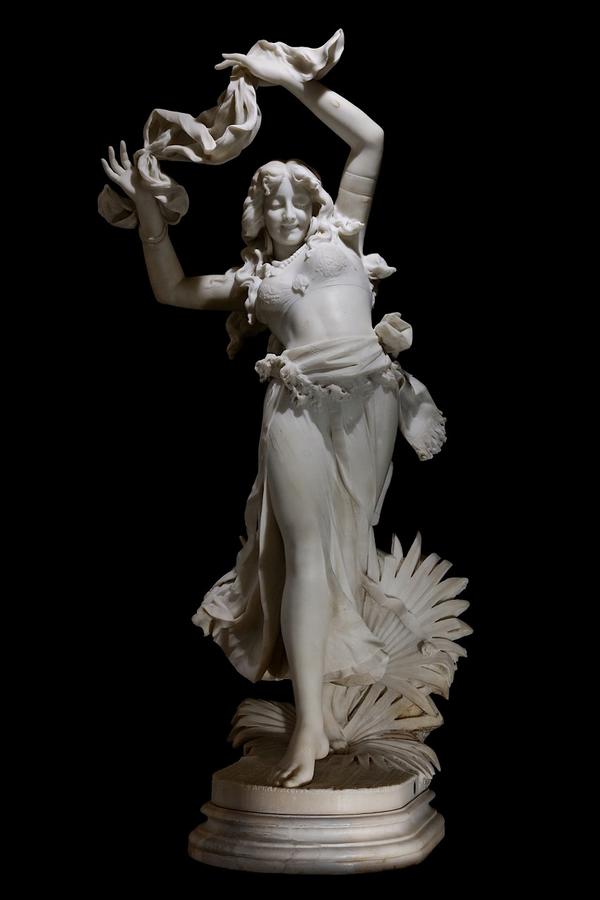The marble sculpture Mother and Child was created in the late 19th century. It underwent restoration in the center named after I.E. Grabar in 2014. There, the experts identified the author - it turned out to be the famous Florentine sculptor Ferdinando Vichy.
The artist created several works of marble and alabaster with the names Mother and Сhild. These sculptures usually have a similar composition: a child hugs his mother by the neck, the woman looks at the baby with a smile. Other versions of Mother and Child are to be found in private collections.
The sculpture is attributed to the neo-romantic style. This direction appeared at the turn of the 19th and 20th centuries as a response to the excess of naturalism. At the end of the 19th century many artists copied reality, reflecting it in a scientific manner and even with some disappointment. It was believed that a person is predetermined not by his own will, but by physiology and the environment - so the inner world is not worth attention. Neo-romanticism, on the contrary, revived the idea of importance of feelings and inner choice. In the work Mother and Child features of this direction are reflected: the author used the form of classical harmonious proportions and filled the content with vivid and strong emotions of the characters.
The artist created several works of marble and alabaster with the names Mother and Сhild. These sculptures usually have a similar composition: a child hugs his mother by the neck, the woman looks at the baby with a smile. Other versions of Mother and Child are to be found in private collections.
The sculpture is attributed to the neo-romantic style. This direction appeared at the turn of the 19th and 20th centuries as a response to the excess of naturalism. At the end of the 19th century many artists copied reality, reflecting it in a scientific manner and even with some disappointment. It was believed that a person is predetermined not by his own will, but by physiology and the environment - so the inner world is not worth attention. Neo-romanticism, on the contrary, revived the idea of importance of feelings and inner choice. In the work Mother and Child features of this direction are reflected: the author used the form of classical harmonious proportions and filled the content with vivid and strong emotions of the characters.






